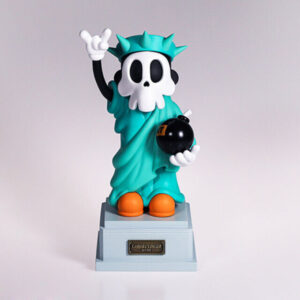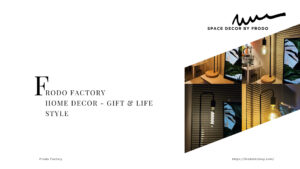News
Decorative Objects & Sculptures: Elevating Your Home with Artful Touches
Decorative Objects & Sculptures: Elevating Your Home with Artful Touches
In the realm of interior design, few elements hold as much transformative power as decorative objects & sculptures. These aren’t merely accessories; they are the silent storytellers of your home, reflecting your personality, curating your aesthetic, and infusing your living spaces with unique character and charm. From a delicate ceramic vase to a commanding bronze figure, each piece contributes significantly to the overall ambiance and visual narrative of your abode.
The Allure of Decorative Objects: Beyond Mere Embellishments
Decorative objects encompass a vast and eclectic array of items designed to enhance aesthetic appeal. This category stretches far beyond simple trinkets, including everything from ornate candelabras and antique globes to whimsical paperweights and unique bookends. The true beauty of these pieces lies in their remarkable versatility and their subtle, yet profound, ability to shift the mood and feel of any room.
- Adding Personality and Character: Your home should be a canvas reflecting who you are. Decorative objects are prime vehicles for showcasing your interests, travels, and passions. A carefully curated collection of vintage cameras, a handcrafted wooden bowl acquired during a journey, or a quirky desk accessory can instantly inject your unique personality into a space, making it feel genuinely lived-in and loved.
- Creating Captivating Focal Points: A strategically placed decorative object can immediately draw the eye and serve as a captivating focal point. Imagine a striking ceramic bowl on a console table, or a beautifully arranged cluster of items on a bookshelf. These carefully composed arrangements guide the gaze, create visual interest, and prevent a room from feeling flat or uninspired.
- Introducing Texture and Materiality: Decorative objects are crafted from an astonishing variety of materials—ceramic, glass, metal, wood, resin, stone, and beyond. Incorporating different textures through these pieces adds depth and richness to your decor. A smooth marble coaster placed next to a rough-hewn wooden tray creates a compelling tactile contrast, elevating the sensory experience of the room.
- Infusing Color and Vibrancy: While larger furniture pieces often establish the primary color palette of a room, decorative objects offer an excellent opportunity to introduce pops of complementary or contrasting hues. A vibrant abstract sculpture, a collection of jewel-toned glass bottles, or a brightly painted decorative box can inject energy and visual excitement into an otherwise neutral space, making it feel more dynamic.
- Storytelling and Conversation Starters: Many decorative objects carry an inherent history or a unique narrative. An antique find, a handcrafted piece from a local artisan, or a souvenir from a memorable trip all have stories to tell. These pieces naturally become conversation starters, inviting guests to inquire about their origins and significance, fostering a more engaging environment.
Sculptures: Art in Three Dimensions for Your Home
Sculptures, a specialized and often more impactful subset of decorative objects, elevate the artistic statement within your home. They are three-dimensional works of art that command attention and bring a sense of grandeur and sophisticated elegance to any space. From abstract forms that invite quiet contemplation to figurative pieces that evoke powerful emotions, sculptures are truly powerful decorative elements.
- Defining Space and Form: Sculptures, by their very nature, occupy space in a dynamic way. They can effectively define zones within an open-plan living area, anchor a large room, or even serve as a dramatic centerpiece on a dining table. Their inherent three-dimensionality adds a sculptural quality to your decor that flat objects simply cannot achieve, lending depth and presence.
- Evoking Emotion and Intellectual Engagement: Like all forms of art, sculptures possess the profound power to stir emotions and provoke thought. A serene Buddha statue might inspire a sense of tranquility and mindfulness, while a dynamic modern sculpture could spark curiosity and intellectual engagement. Choosing sculptures that resonate with you on a deeper, personal level ensures your home is not just beautiful, but also profoundly meaningful.
-

Liberty Dead Fan Art Toy - Adding Architectural Interest: In rooms that may lack strong architectural details, a striking sculpture can become a powerful focal point, injecting a sense of structure and unique design interest. A tall, slender sculpture can artfully draw the eye upwards, emphasizing ceiling height, while a more substantial, grounded piece can effectively anchor a large wall or corner.
- Versatility in Placement: Sculptures are not limited to traditional pedestals. Smaller pieces can gracefully adorn bookshelves, coffee tables, or console tables. Larger, more significant sculptures can be placed on the floor in corners, near fireplaces, or even in thoughtfully designed outdoor garden spaces, seamlessly blurring the lines between indoor and outdoor living areas.
- A Timeless Investment: Many sculptures, particularly those by renowned artists or crafted from high-quality, durable materials, can appreciate in value over time. Beyond their immediate aesthetic appeal, they can also represent a thoughtful and lasting investment in art and culture, enriching your home for years to come.
Choosing and Arranging Your Decorative Objects & Sculptures: Design Principles for Impact
When selecting and arranging decorative objects and sculptures, think of yourself as a home curator. The ultimate goal is to create cohesive, visually appealing displays that enhance your home’s overall aesthetic and flow. Here are some key considerations, incorporating principles often highlighted in home decoration blogs and design guides:
- Consider Scale and Proportion: This is paramount for visual harmony. A tiny trinket will get lost on a vast wall, and an oversized sculpture will overwhelm a small side table. Ensure your chosen pieces are proportionate to the furniture they accompany and the room they inhabit. For large decorative objects, ensure they have ample space to breathe and stand out.
- Embrace Variety (but Maintain Harmony): Mix different shapes, sizes, textures, and materials to create dynamic visual interest. However, ensure there’s a unifying element—perhaps a shared color palette, a consistent style (e.g., minimalist decorative objects, bohemian decor accents, traditional home sculptures), or a recurring theme—to maintain overall harmony and avoid visual chaos.
- The Power of Grouping (The Rule of Three): Odd numbers, particularly three, tend to be more visually appealing and balanced than even numbers in design. When grouping smaller decorative objects, arrange them in threes or fives of varying heights and sizes. This creates a more dynamic, engaging, and artful vignette.
- Create Engaging Vignettes: A vignette is a small, artfully arranged display of objects that tells a story or evokes a mood. Use trays, stacks of books, or small pedestals as a base for your vignettes on coffee tables, console tables, or bookshelves. Think about incorporating different heights, textures, and forms within each grouping.
- Strategic Placement is Key:
- Shelves: Avoid overcrowding. Leave sufficient breathing room around objects. Alternate between vertical elements (like a standing sculpture) and horizontal elements (like stacked books or a reclining object).
- Coffee Tables: Choose a few substantial centerpiece objects that enhance the space without impeding conversation or becoming cluttered.
- Console Tables: Ideal for creating a welcoming entryway vignette with a lamp, a few decorative objects, and perhaps a small plant or floral arrangement.
- Fireplace Mantels: A classic spot for symmetrically or asymmetrically arranged objects and sculptures, often anchored by a large mirror or piece of art.
- Pedestals: Perfect for showcasing significant statement sculptures or substantial urns, giving them the prominence they deserve.
- Consider Lighting: The right lighting can dramatically enhance the beauty and impact of your decorative objects and sculptures. Spotlights can highlight a particular piece, drawing attention to its form and texture, while ambient lighting can create a soft glow that enhances a collection.
- Reflect Your Personal Style: Ultimately, choose pieces that genuinely resonate with you and your personal aesthetic. Whether you gravitate towards modern abstract sculptures, vintage decorative items, art deco objects, or rustic home decor accents, ensure they align with the overall feel and atmosphere you want to create in your home.
- Less Can Be More: Sometimes, a single, carefully chosen statement sculpture or a few impactful decorative objects can have a greater visual effect than a multitude of smaller, less significant items. Prioritize quality and impact over quantity to avoid visual clutter.
- Rotate and Refresh: Don’t feel obligated to keep the same objects out year-round. Rotate your collection seasonally or whenever you feel like a change. This keeps your home feeling fresh, allows you to appreciate different pieces from your collection, and prevents stagnation.
Trending Inspirations for Your Home Decor
While timeless appeal is key, keeping an eye on current trends can inspire your choices. Always prioritize what genuinely speaks to your taste.
- Organic and Biomorphic Shapes: Flowing, nature-inspired forms in ceramics, wood, and metal are very popular.
- Matte and Textured Finishes: A sophisticated, understated aesthetic for many contemporary decorative objects.
- Handcrafted and Artisan Pieces: A strong emphasis on unique, handmade decor items that tell a story and support local or global artisans.
- Sustainable and Ethical Decor: Choosing objects made from recycled materials or supporting fair-trade practices.
- Geometric Forms: Clean lines, abstract shapes, and cubist influences remain popular in modern home sculptures.
- Natural Materials: Stone, raw wood, terracotta, and woven elements bring an earthy, grounding feel to interiors.
- Abstract Figurative Sculptures: Stylized human forms that evoke emotion and movement without being overtly literal.
- Collector’s Items: Curating a specific collection (e.g., antique pottery, vintage cameras, unique vases, limited edition art objects) that reflects a specific passion.
Conclusion: Your Home, A Personal Art Gallery
Decorative objects and sculptures are truly indispensable elements in crafting a home that is both beautiful and deeply personal. They are the artistic accents that define your space, spark joy, and narrate your unique story. By thoughtfully selecting and artfully arranging these treasures—whether you’re searching for unique home decor accents, elegant living room sculptures, bespoke decorative items, or affordable art for home—you transform your house into a curated gallery, a sanctuary that not only pleases the eye but also nurtures the soul. So, embark on your quest for these artful touches; each piece you choose is an opportunity to express yourself and enhance the beauty of your everyday life.


